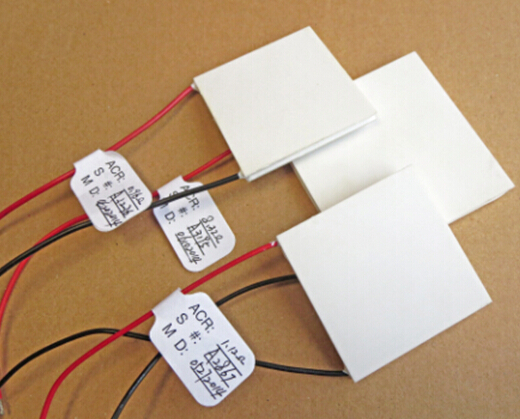The Thermoelectric Cooler is also called Semiconductor refrigeration module, Peltier, etc. . Because of there are two sides, one side absorbs heat, and the other side dissipates heat. Its effect is heat conduction. It does not produce heat by itself. So it is called Refrigeration piece or thermoelectric cooler module.
1.Summary
Propaedeutic
1.Peltier effect
The conceptual structure of Peltier effect is very simple. —— When the current goes through the thermal couple, one of the nodes dissipates heat while the other node absorb heat.
The phenomenon is found by a French physicist called Jean Peltier in 1834.
2. P type semiconductor
It is a kind of semiconductor, the electronic density of conduction is more than hole density of valence band. The p type is formed by increasing acceptor impurity, for example, mix impurity boron with Si.
3. N type semiconductor
It is one form of semiconductor, the electronic density of conduction band is more than hole density of valence band.
The application of the Peltier effect
Semiconductor cooling refrigerator consists of semiconductor. It appeared in around 1960 and it was called cooling installation. However, the theory of Peltier effect can be date back to 19 century. Look at the two pictures that consist of two metals X and Y. That was closed circuit.
Heat will be moved from cool side to hot side when we connect power. The temperature will be down on the cold side and other is opposite.
The Peltier effect is very famous and it was found firstly in 1821. It was found by a Germany scientist called Thomas Seeback firstly. But his result is wrong. He doesn't realize the principle of science. Since 1834, A French watch maker called Jean Peltier, whose job is to research the physical phenomenon. He found the real reason for this. The phenomenon has its real application with Semiconductor's development. That is the refrigerator (Notice: this is refrigerator, not Semiconductor refrigerator at that time.)
The principle and structure of Semiconductor refrigerator
The semiconductor hot point pair consists of N model and P model. The material N model has unnecessary electron, it has minus temperature than that in potential. P model does not have enough electrons. It has plus temperature than that in potential. The energy must be increased and the temperature must be down when the P model cross node to N model, and the increased energy is equal to the consumption of the node.
On the contrary, the node's temperature will increase when the electron go across through the P. The thermal couple which connects directly is inapplicable in our real life. So we use the contact method as shown in the following the picture to replace that.
The test proved it. Put the third material into the temperature difference circuit (copper and wires), and it will not change the character of electricity.
Like this, semiconductor component can meet user's requirements by using different contact method. If combining N model semiconductor component with P model semiconductor component together then it becomes a pair of thermocouple. It will produce difference in temperature and heat transfer in somewhere splice when it contact power.
The direction of current is from N to P. Temperature goes down and collects heat. This is the cold side. However, the next splice, the direction of current is from P to N. The temperature increase and release the heat. This is the hot side.
So the Semiconductor Thermoelectric Cooler makes up much particle of N and P model. They are arrangement.
